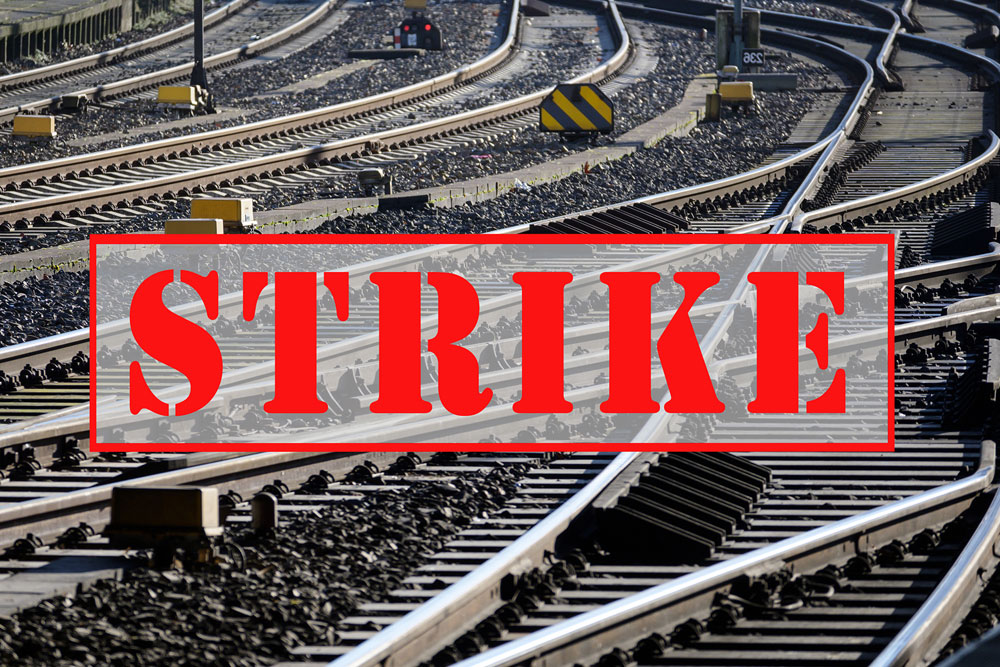Supply chain stability has become the top priority for most companies in today’s uncertain and volatile market. The latest wave of disruption comes in the form of inflationary pressure with the response of rapid escalation of recession proof strategies to already exhausted supply chains. Just when we thought we had hit rock bottom, the events of last week and the possibility of a US railway strike was knocking at the door. The impact to supply chains across many sectors would have been catastrophic.
A moment for a collective sigh of relief.
The possibility of the first nationwide railroad strike in three decades had set the cat among the pigeons, and for a good reason. The strike would inflate prices of everything from food, gas, and transportation to consumer goods and manufacturing. This, along with the 40-year high in inflation would exacerbate the situation, not just for the US but countries such as Canada as well.
Michael Gullo, Vice President of Policy at the Business Council of Canada, weighed in:
“We can only assume that a $2-billion daily impact on the American economy will spill over to Canada”.
He added that the trickle down could have implications on key exports including energy, agriculture, fertilizer and manufactured goods.
We may have seen it coming. But did we prepare for it?
Making the Supply Chain “Disruption Proof” with Agility
Still reeling under the ripples of pandemic-induced supply chain disruptions, businesses across the globe are all but out of the woods. While we’ve only just dodged the freight strike bullet, the need to introspect on inherent points of friction in supply chains is more urgent now than ever before. Customers don’t see disrupted supply chains; they see broken promises. And this is why organizations need to find a way to drive better customer experiences with agile and flexible supply chain solutions.
Frictionless supply chains built on flexibility and agility work at two levels: technology and strategy. On the one hand, companies need more technology built on MACH architecture (Microservices based, API first, Cloud-native and Headless) so solutions can be quickly optimized, scaled and adapted to rapidly changing requirements. Choosing these technologies also helps avoid technical debt and other undesirable outcomes.
From the strategy point-of-view, businesses need to zoom out and find new ways to make the most of technology. Whether it’s dynamic fulfilment or micro-fulfilment, agility is as much a function of strategy as it is with technology. Good strategy is driven by technology, and vice-versa.
Visibility is Key
Only 6% companies report full visibility of their supply chain, while 62% companies report partial visibility (GEODIS).
For supply chains to be resilient, businesses must have the ability to identify vulnerabilities therein. Without visibility, businesses lack traceability of inventory and the “larger picture” of supply chain performance. Even if innovations (automation, AI etc.) exist, they lack the ability to discern when and where to deploy them.
The first step to improve visibility is assessing redundancies and vulnerabilities. Let’s face it, businesses need to build in a small amount of redundancies to be prepared to increase production if required. However, this cannot come at the cost of profitability and productivity. With hyper visibility, organizations can hit the sweet spot, and avoid oversell and backorders. Seemingly simple visibility tools such as process flow mapping and analytics can improve collaboration with partners and help balance dexterity with digital technology.
Macro Gains with Micro-fulfilment
Micro-fulfilment – placing small-scale warehouses in urban locations with dense populations – is a strategic move that helps improve delivery times. Despite supply chain disruptions, the two-day delivery norm is here to stay, and without micro-fulfilment, it’s only going to cost businesses more. In fact, the pandemic made customers even more comfortable with online ordering, which made the last-mile that much more significant.
In fact, last-mile costs comprise 41% of the costs attribute to supply chains for a product (Capgemini). Micro-fulfilment enables companies to move inventory and fulfilment closer to customers, giving them a chance to get competitive with delivery times. This costs way less when compared to large regional delivery centres. More importantly, it makes supply chains resilient in the face of disruption by optimizing the use of existing inventory.
Going 360° with Dynamic Fulfilment
With dynamic distribution, you take charge of every aspect of the ever-changing nature of the end-to-end supply chain. The algorithm-driven system can dynamically execute the release schedule and batch size depending on the requirements of that particular order day. It dynamically allocates orders, almost in real time, and provides inventory guidance across the network. Additionally, businesses can use dynamic fulfilment to leverage scenario planning and minimize costs, transits, or both.
This interconnected cross-enterprise system drives customer experience by connecting the right product with the right node at the right time. Supply chain networks get better visibility and control over logistics, along with improved scalability and flexibility.
If there’s one thing that the past couple of years have taught us, it’s that there’s only so much you can do to plan for the future. Unless you have a crystal ball that really works, you’re better off preparing for uncertainties, rather than trying to predict them. And this is where agility is key; agility in both, technology and approach.
Curious to learn more about how to create a frictionless supply chain?
Speak to one of our experts!

